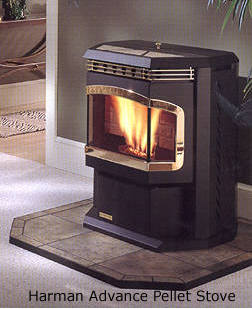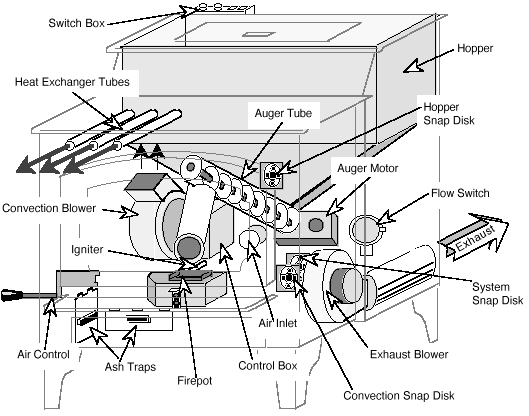pellet stoves: how they work

Harman Advance pellet stove.

Pellet stove cutaway.
Pellet stoves work by automatically dispensing pellets (made of wood, corn, or some other biomass material) from a hopper into a firepot or burn box. A typical hopper holds from 40 pounds (18 kilograms) to over 100 pounds (45 kilograms) of pellets. An auger or large screw, driven by an electric motor, slowly turns around carrying the pellets from the hopper and depositing them at a steady rate onto the hot fire. A fan blows a jet of air across the fire maintaining a high temperature and enabling the pellets to burn evenly and efficiently. A second fan blows hot air, warmed by passage through heat exchanger pipes that run through the interior of the stove, into the surrounding room. Exhaust gases are vented from the stove through a pipe that is narrower and much less expensive to install than an ordinary chimney.
Modern pellet stoves come with a thermostat that allows precise control of room temperature by adjusting the rate at which fuel is added; the thermostat may also be programmable so that, for example, at night the stove automatically runs at its lowest feed rate.
With just a few pellets it is able to generate a lot of heat and burn the pellets at incredible efficiencies. You achieve something similar in a wood stove when you open up all of the dampers and allow the fire to pull in lots of air to fan the flame. This puts out lots of heat and burns the logs quite thoroughly, but you will also be burning through the available fuel quickly and generating more heat than you can transfer into the room. The one thing a traditional wood stove has over a pellet stove is simplicity. Wood stoves may be inefficient and polluting, but they don't have many moving parts. Find out more about pellet stove operation.
